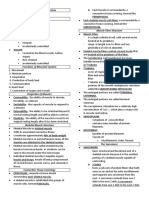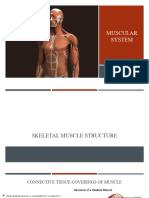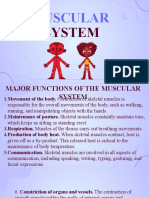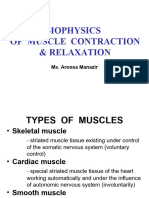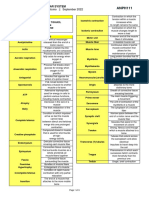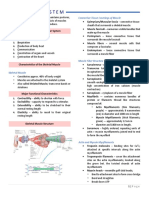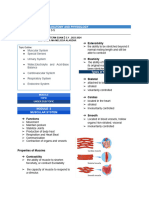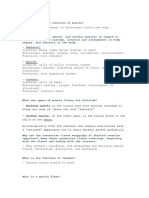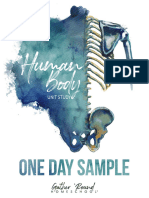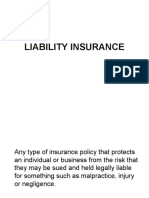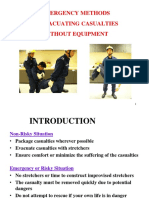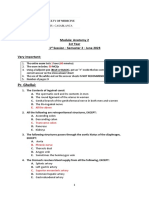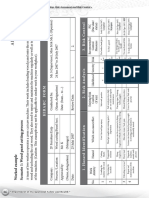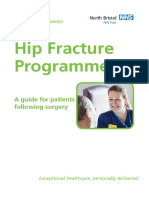0% found this document useful (0 votes)
23 views9 pagesThe Muscular System Notes
The document provides a comprehensive overview of the muscular system, detailing muscle characteristics such as excitability, extensibility, elasticity, and contractility, as well as distinguishing between voluntary and involuntary muscles. It describes the structure and function of different muscle types, the organization of skeletal muscles, and the relationship between muscles and the nervous system, including the role of neurotransmitters in muscle contraction. Additionally, it outlines the major functions of muscles, the impact of exercise, and identifies key muscles and their actions in various body regions.
Uploaded by
Bhavna TanwaniCopyright
© © All Rights Reserved
We take content rights seriously. If you suspect this is your content, claim it here.
Available Formats
Download as DOC, PDF, TXT or read online on Scribd
0% found this document useful (0 votes)
23 views9 pagesThe Muscular System Notes
The document provides a comprehensive overview of the muscular system, detailing muscle characteristics such as excitability, extensibility, elasticity, and contractility, as well as distinguishing between voluntary and involuntary muscles. It describes the structure and function of different muscle types, the organization of skeletal muscles, and the relationship between muscles and the nervous system, including the role of neurotransmitters in muscle contraction. Additionally, it outlines the major functions of muscles, the impact of exercise, and identifies key muscles and their actions in various body regions.
Uploaded by
Bhavna TanwaniCopyright
© © All Rights Reserved
We take content rights seriously. If you suspect this is your content, claim it here.
Available Formats
Download as DOC, PDF, TXT or read online on Scribd
/ 9





